#Sterndrive
Explore tagged Tumblr posts
Text
Look to the skies in the new Galeon 430 Skydeck
Look to the skies in the new Galeon 430 Skydeck http://wp.me/pzWMi-1NY
Look to the skies and you may catch a glimpse of the new Galeon 430 Skydeck shooting by. It’s the newest representative for the third generation of Galeon yachts. The refreshing top deck design called the Skydeck, combines the benefits of both the Fly and hardtop versions. The WSB team take a look behind the Skydeck, a new word for fly-bridge? Continue reading Look to the skies in the new Galeon…

View On WordPress
#Aquadrive#Axius#Business#Decks#Galeon#Galeon 430 Skydeck#Length overall#look to the skies#Polish boat builders#Skydeck#skyfall#Sterndrive#Watercraft#wsb#Yacht
1 note
·
View note
Text
NSW's Leading Marine Repair & Service Experts
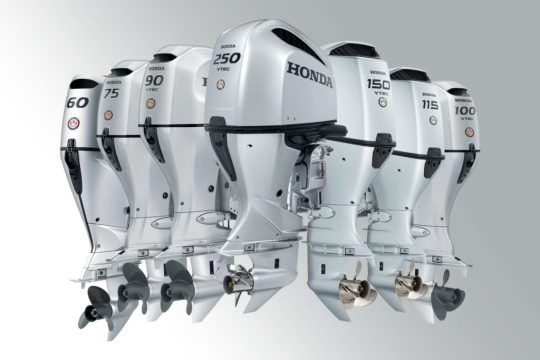
Challenor Marine Services, located in Caringbah, NSW, delivers expert boat repairs and servicing for all outboard and sterndrive vessels. Owned by Cris Challenor, the factory-trained team brings over 65 years of industry experience to every job. As authorized MerCruiser, Honda Marine, and Volvo Penta dealers, they offer a comprehensive online parts store and personalized support. Trust their friendly specialists at Taren Point Workshop or Dolans Bay Marina for reliable marine solutions.
0 notes
Text
Aquasports Marine specialises in the sale of new and used boats, including Australia's most renowned boat brands Bar Crusher, Quintrex and Haines Hunter boats. Our dealership has everything you could possibly need from runabouts, offshore fishing, bowriders, cuddy cabins, water skiing and family allrounders. We can help you “Live the dream…”. We are distributors for Mercury and Yamaha outboards and Mercruiser Sterndrives and have been awarded Mercury “Australian Dealer of the year” for 3 years in a row!!! We are also Quintrex WA Dealer of the year for the past six years in a row, so you know you are dealing with the experts in boating for Western Australia. We specialise in the sale of new and used boats, full boat and motor servicing and repairs, finance, insurance, boat chandlery, oils and motor spare parts. Aquasports Marine is a family owned and operated business that prides itself on service and value for money. Aquasports Marine – where “pride is the difference”. Please contact us on (08) 9250 3339 or send us an email to [email protected] Happy Boating!
1 note
·
View note
Text
0 notes
Text
Marine Propeller Market Size, Share, Growth Overview & Segmentation by 2032
The marine propeller market was valued at USD 3.48 billion in 2021 and is expected to grow from USD 3.60 billion in 2022 to USD 5.68 billion by 2029, with a compound annual growth rate (CAGR) of 6.76%. This information comes from a recent report by Fortune Business Insights titled “Marine Propeller Market, 2022-2029.”
The marine propeller market is a vital segment of the global maritime industry, focusing on the design, production, and distribution of propellers used to propel various types of ships and vessels. Marine propellers convert rotational motion into thrust, enabling vessel movement across water. These components are critical for commercial ships, naval vessels, fishing boats, and recreational watercraft.
Know More Information:
https://www.fortunebusinessinsights.com/marine-propeller-market-103074
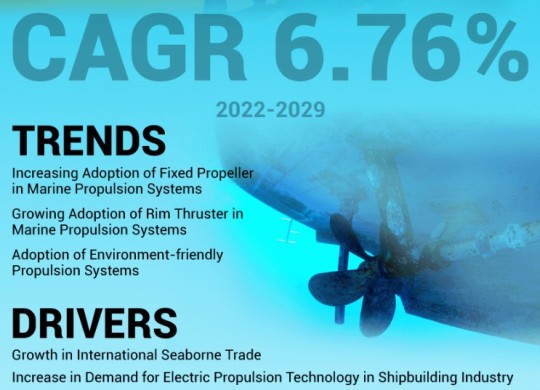
Key drivers of the market include the rise in global seaborne trade, increasing demand for fuel-efficient propulsion systems, and advancements in marine technology. The market is segmented based on type (fixed pitch, controllable pitch), material (bronze, stainless steel, aluminum), and application (merchant ships, naval ships, leisure boats, and others).
Asia-Pacific holds a significant share of the market due to its strong shipbuilding industry, particularly in countries like China, South Korea, and Japan. Additionally, stringent environmental regulations are pushing the development of eco-friendly and energy-efficient propeller systems.
Overall, the marine propeller market is poised for steady growth, driven by innovation, regulatory compliance, and the continuous expansion of the maritime sector.
Key Insights
Growth Factors: The market is likely to grow due to advancements in technology and the increasing use of fixed propellers in marine propulsion systems. There's also a growing trend for real-time data tracking in these systems, which supports the use of eco-friendly propulsion options.
Challenges: The ongoing Russia-Ukraine war may impact the market negatively.
Impact of the Russia-Ukraine War
Increased Defense Spending: As countries ramp up their defense budgets, demand for new warships is rising. For instance, Poland announced plans to buy new mine countermeasure vessels to strengthen its naval capabilities.
Supply Chain Disruptions: However, the war has also led to disruptions in cargo operations, which could pose challenges for companies looking to expand.
Major Companies in the Market
Key players in the marine propeller market include:
AB Volvo (Sweden)
Brunswick Corporation (U.S.)
Kongsberg Gruppen (Norway)
Bruntons Propellers Ltd. (U.K.)
Hyundai Heavy Industries (South Korea)
Others include MAN SE, Rolls-Royce, and Wärtsilä Corporation.
Market Segmentation
The market can be broken down into several categories:
Type: Thrusters, propellers, and others.
Application: Naval ships, merchant ships, recreational boats, and others.
Number of Blades: 3-blade, 4-blade, and 5-blade propellers.
Propulsion Types: Sterndrive, inboard, outboard, and others.
Materials: Aluminum, stainless steel, bronze, and more.
End-Users: Aftermarket and OEM (original equipment manufacturer).
Regions: North America, Asia Pacific, Europe, and the Rest of the World.
Report Coverage
The report provides a comprehensive view of market size, share, and revenue. It includes analyses like Porter's Five Forces and SWOT, and combines both qualitative and quantitative research. Data was gathered from various sources, including interviews and industry reports.
Drivers and Restraints
Growth Drivers
Increase in Seaborne Trade: Recovery from the COVID-19 pandemic has led to a rise in seaborne trade, boosting demand for marine propellers. Developing economies are expected to play a key role in this growth.
Challenges
Environmental Regulations: Stricter environmental laws may pose challenges for companies expanding their offerings.
Regional Insights
Asia Pacific
The region shows strong growth potential, particularly due to rising demand for frigates and corvettes. Countries like South Korea, China, Japan, and India are upgrading their naval fleets, contributing to market growth.
North America
In North America, particularly in the U.S. and Canada, the marine sector is thriving. Upgrades to cargo systems for better data exchange are expected to drive growth.
Europe
Europe is anticipated to offer significant opportunities, especially due to the presence of leading companies and a rising demand for cruise ships.
Competitive Landscape
Companies are investing in product development, technology advancements, and mergers to strengthen their market positions. There is a focus on research and development to stay competitive and expand geographically.
Recent Developments
In March 2020, SCHOTTEL received a contract to supply propulsion units for two new ferries, indicating ongoing activity and investment in the sector.
0 notes
Link
0 notes
Text
Dive into adventure with a reliable used Mercury engine!

Mercury is renowned for its innovative engineering and robust construction, offering a range of engines designed for both performance and durability on the water. From efficient four-stroke outboards to powerful sterndrive engines, there’s a Mercury engine perfect for every boating need.
Why Choose a Used Mercury Engine? Proven reliability and performance Advanced technology for fuel efficiency A diverse range of options to suit all boating styles Excellent value for money without compromising on quality Before you buy, remember to research, inspect, and test run to ensure you’re making the best choice!
#MercuryEngines#UsedEngines#BoatingLife#MarinePerformance#AdventureAwaits#BoatMaintenance#MarineInnovation#GetOnTheWater
0 notes
Text
Muck Blaster: The Ultimate Solution for Marine Engine Maintenance
If you’re a boat owner or marine enthusiast, you know the struggle of dealing with muck and grime buildup in your engine and cooling systems. Over time, marine engines and cooling systems accumulate biological growth, mineral deposits, and other debris that can significantly hinder performance and cause expensive damage. This is where Muck Blaster comes into play – a powerful solution designed to clean and maintain your marine engine’s health.
What is Muck Blaster?
Muck Blaster is a specialized cleaning solution formulated to remove sludge, algae, and mineral deposits from marine engines, heat exchangers, and other cooling systems. It’s engineered to dissolve stubborn buildup without causing harm to the internal components of your engine. Muck Blaster is compatible with various types of marine engines, including inboards, outboards, and sterndrives, making it a versatile tool for any boat owner.
Why is Regular Cleaning Important?
Marine engines operate in challenging environments where they are constantly exposed to saltwater, mud, algae, and other contaminants. Over time, these substances accumulate and form deposits that can clog passages, reduce cooling efficiency, and even lead to overheating or engine failure.
Key reasons to regularly clean your marine engine with Muck Blaster:
Prevent Overheating: Deposits of muck and scale can clog cooling passages, reducing the flow of coolant and causing the engine to overheat. Muck Blaster effectively removes these deposits, ensuring optimal cooling efficiency.
Extend Engine Life: Regular cleaning helps prevent corrosion and wear on internal components, prolonging the lifespan of your engine.
Enhance Performance: A clean engine runs more smoothly and efficiently, providing better fuel economy and overall performance.
Reduce Maintenance Costs: By preventing serious damage, regular use of Muck Blaster can help avoid costly repairs and maintenance down the line.
How Does Muck Blaster Work?
Muck Blaster uses a combination of powerful cleaning agents and descaling chemicals to dissolve and flush away all types of marine deposits. Here’s a step-by-step guide on how to use it:
Prepare the System: Turn off your engine and ensure it is cool. Remove the boat from the water and drain the cooling system.
Dilute the Solution: Mix Muck Blaster with fresh water as per the instructions on the bottle. The dilution ratio will depend on the level of buildup in your engine.
Circulate the Solution: Use a pump to circulate the diluted Muck Blaster solution through the engine's cooling system. Allow it to circulate for 15-30 minutes to break down the deposits.
Flush the System: After the cleaning cycle is complete, flush the engine thoroughly with fresh water to remove all residues.
Inspect and Repeat: Check the cooling system for any remaining debris. Repeat the process if necessary to ensure all buildup is removed.
Benefits of Using Muck Blaster
Environmentally Friendly: Unlike some harsh chemicals, Muck Blaster is formulated to be eco-friendly, ensuring that it does not harm marine life or the environment.
Easy to Use: Muck Blaster’s simple application process makes it accessible for all levels of boat owners, from beginners to experienced enthusiasts.
Cost-Effective: Regular use of Muck Blaster can save you money by preventing costly repairs and improving fuel efficiency.
Versatile Application: Suitable for various types of marine engines and cooling systems, making it an all-in-one solution for engine maintenance.
When Should You Use Muck Blaster?
Muck Blaster should be used at least once a season, especially if your boat operates in saltwater or areas with high biological growth. However, if you notice signs like increased engine temperature, reduced water flow, or visible buildup in the cooling passages, consider using Muck Blaster more frequently.
Tips for Optimal Results
Follow Instructions Carefully: Always adhere to the recommended dilution ratios and circulation times for the best results.
Use Fresh Water: After using Muck Blaster, flush your engine with plenty of fresh water to remove any remaining solution and debris.
Regular Inspections: Regularly inspect your cooling system for any signs of buildup and use Muck Blaster as needed.
Conclusion
Maintaining a clean marine engine is crucial for optimal performance and longevity. Muck Blaster provides a powerful and effective solution to tackle the stubborn deposits that can cause serious damage to your engine. By incorporating Muck Blaster into your regular maintenance routine, you can enjoy smoother sailing, better fuel efficiency, and peace of mind knowing your engine is in top condition.
0 notes
Text
Do any companies manufacture engines for cargo ships?
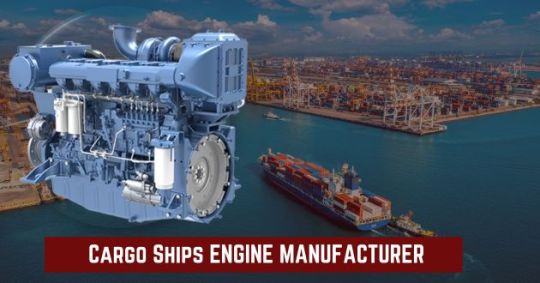
Marine engines are specifically manufactured for operating in harsh marine environments and have to withstand exposure to vibrations, salt waves and fluctuating temperatures. Marine engines are available in different types like inboard, outboard and sterndrive configurations and each type has different functions along with visible size. Visit here: https://www.quora.com/Do-any-companies-manufacture-engines-for-cargo-ships/answer/Surya-Yadav-500
0 notes
Text
Why should you buy a jetcar from Excellent Yachting Antalya Turkey
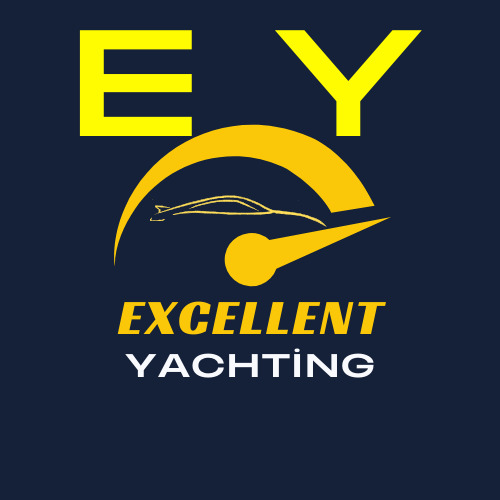
Boat Engines Unleashed: Unlocking the Power Behind Your Vessel
Boat Engines Unleashed: Unlocking the Power Behind Your Vessel
When it comes to maximizing the performance of your vessel, understanding the different types of boat engines and their capabilities is essential. Boat engines are the heart and soul of any watercraft, providing the power and propulsion needed to navigate the open waters. From speedboats to yachts, each type of boat requires a specific engine to ensure optimal performance.
There are several factors to consider when choosing the right engine for your boat. Horsepower plays a crucial role in determining the speed and acceleration of your vessel. The higher the horsepower, the more power your boat engine can generate. Fuel efficiency is another important aspect to consider, as it directly impacts the cost of operating your boat. Opting for an engine with good fuel efficiency can save you money in the long run. Additionally, the type of engine, whether it's an outboard, inboard, or stern drive, will depend on the size and design of your boat.
Maintaining and caring for your boat engine is vital to ensure its optimal performance and longevity. Regular inspections and maintenance checks are essential to identify any potential issues before they become major problems. This includes checking the oil levels, inspecting the fuel system, and cleaning the engine components. Using the correct fuel and lubrication is also crucial to prevent damage and optimize the performance of your boat engine. It's important to follow the manufacturer's guidelines and recommendations for fuel and lubrication types.
When the boating season comes to an end, proper winterization and storage of your boat engine are crucial to protect it from harsh weather conditions. This includes draining the engine of any water, adding antifreeze, and storing it in a dry and secure location. By taking these steps, you can extend the lifespan of your boat engine and ensure it's ready for the next season.
Whether you're a seasoned boater or just starting out, troubleshooting and performing minor repairs on your boat engine is a valuable skill. Understanding common problems that may arise and knowing how to address them can save you time and money. From checking the spark plugs to cleaning the carburetor, being able to troubleshoot and perform basic repairs will keep your engine running smoothly.
If you're looking to enhance the power, efficiency, and overall performance of your boat engine, upgrading and customization options are available. Performance enhancements, such as modifications to increase horsepower, speed, and fuel efficiency, can take your boating experience to the next level. Additionally, personalization options allow you to customize the appearance of your boat engine, reflecting your unique style and personality.
Choosing the Right Engine
When it comes to choosing the right engine for your boat, there are several important factors to consider. One of the key considerations is horsepower. The horsepower of an engine determines the speed and power of your vessel. It's essential to choose an engine with enough horsepower to meet your needs. Whether you're looking for a high-speed performance or a more leisurely cruising experience, selecting the right horsepower is crucial.
Another factor to consider is fuel efficiency. Fuel costs can add up quickly, so it's important to choose an engine that is fuel efficient. Look for engines that are designed to maximize fuel efficiency, as this will not only save you money but also help reduce your environmental impact.
Engine type is also an important consideration. There are different types of boat engines available, including outboard, inboard, and sterndrive engines. Each type has its own advantages and disadvantages, so it's important to understand the differences and choose the one that best suits your needs. Outboard engines are typically more versatile and easier to maintain, while inboard engines offer better weight distribution and are often more fuel efficient.
Ultimately, the right engine for your boat will depend on your specific needs and preferences. Consider factors such as horsepower, fuel efficiency, and engine type to make an informed decision. By choosing the right engine, you can maximize the performance and enjoyment of your vessel.
Maintenance and Care
Maintenance and care are crucial aspects of ensuring the optimal performance and longevity of your boat engine. By following some essential tips, you can keep your engine running smoothly and avoid costly repairs or replacements.
Regular Inspections: Regular inspections are vital for identifying any potential issues before they escalate into major problems. Schedule routine inspections to check for leaks, corrosion, or any signs of wear and tear. Additionally, inspect the belts, hoses, and electrical connections to ensure they are in good condition.
Proper Fuel and Lubrication: Using the correct fuel and lubrication is of utmost importance to prevent damage and maximize your boat engine's performance. Consult the manufacturer's guidelines to determine the appropriate fuel type and octane rating for your engine. Additionally, use high-quality lubricants that are specifically designed for marine engines to ensure proper lubrication and reduce friction.
Winterization and Storage: When the boating season comes to an end, it is crucial to properly winterize and store your boat engine. This process involves draining the engine of any remaining water, adding antifreeze, and protecting it from freezing temperatures. Store your boat engine in a dry and secure location to shield it from harsh weather conditions and potential damage.
Troubleshooting and Repairs: Despite proper maintenance, issues may still arise with your boat engine. It is essential to troubleshoot and address these problems promptly. Familiarize yourself with the engine's manual and learn how to perform minor repairs, such as replacing spark plugs or cleaning filters. However, for complex issues, it is recommended to consult a professional mechanic.
By following these maintenance and care tips, you can ensure the longevity and optimal performance of your boat engine. Remember that regular inspections, proper fuel and lubrication, winterization, and addressing issues promptly are key to keeping your engine running smoothly for years to come.
Regular Inspections
Regular Inspections
Regular inspections and maintenance checks are crucial for the optimal performance and longevity of your boat engine. By conducting regular inspections, you can identify and address potential issues before they escalate into major problems that can be costly to repair.
During these inspections, it is important to examine various components of your boat engine, such as the fuel system, electrical connections, cooling system, and belts. Look for any signs of wear and tear, leaks, or loose connections. By catching these issues early on, you can prevent them from causing more significant damage or breakdowns while out on the water.
In addition to visual inspections, it is also essential to perform routine maintenance checks, including changing the oil, filters, and spark plugs. These maintenance tasks help ensure that your boat engine is operating at its best and can help prevent issues from arising in the first place.
Creating a checklist for your regular inspections can be helpful to ensure that you don't miss any important steps. Consider including tasks such as inspecting the propeller, checking the battery, and testing the ignition system. By following a comprehensive checklist, you can have peace of mind knowing that you have covered all the necessary areas.
Remember, regular inspections are not only about identifying problems but also about taking proactive measures to prevent them. By investing time in regular inspections and maintenance, you can enjoy smooth sailing and avoid unexpected breakdowns that can ruin a day on the water.
Proper Fuel and Lubrication
The correct fuel and lubrication are crucial for the optimal performance and longevity of your boat engine. Using the right fuel and lubrication not only prevents damage but also ensures that your engine operates at its peak efficiency.
When it comes to fuel, it is essential to use the type recommended by the manufacturer. Different engines may require different fuel types, such as gasoline, diesel, or even a specific ethanol blend. Using the wrong fuel can lead to engine damage, decreased performance, and increased fuel consumption.
In addition to using the correct fuel, proper lubrication is equally important. Lubricants, such as engine oil, help reduce friction and wear within the engine components, ensuring smooth operation. It is crucial to use the recommended lubricants and change them at regular intervals as specified by the manufacturer.
Regularly checking and maintaining the fuel and lubrication systems is also vital. This includes inspecting fuel filters, ensuring proper fuel flow, and regularly changing the oil and oil filter. Regular maintenance will help prevent clogs, contamination, and other issues that can negatively impact the engine's performance.
Furthermore, it is essential to store fuel properly. Fuel should be stored in approved containers and kept in a cool, dry place away from direct sunlight and heat sources. Stale or contaminated fuel can cause engine problems and affect performance. It is recommended to use fuel stabilizers to prevent fuel degradation during long periods of storage.
In summary, using the correct fuel and lubrication for your boat engine is of utmost importance. It not only prevents damage but also optimizes performance, ensuring a smooth and efficient boating experience. Regular maintenance and proper storage practices further contribute to the longevity and reliability of your boat engine.
Winterization and Storage
Winterization and storage are crucial steps to protect your boat engine during the off-season and ensure its longevity. Harsh weather conditions can cause damage to your engine if it is not properly prepared and stored. By following these guidelines, you can safeguard your investment and be ready to hit the water again when the season starts.
Firstly, it is important to thoroughly clean your boat engine before winterizing it. Remove any dirt, debris, or saltwater residue that may have accumulated during the boating season. This will prevent corrosion and ensure that your engine is in good condition when you start using it again.
Next, you should change the oil and filter in your boat engine. Old oil can become contaminated and cause damage to the engine if left unchanged. By replacing the oil and filter, you are ensuring that your engine is running on clean lubrication, which is essential for optimal performance.
Another important step in winterization is to stabilize the fuel. This can be done by adding a fuel stabilizer to the gas tank. Fuel stabilizers prevent the fuel from deteriorating and causing problems in the engine. It is also recommended to run the engine for a few minutes after adding the stabilizer to ensure that it circulates throughout the fuel system.
Additionally, you should disconnect the battery and store it in a cool and dry place. Extreme temperatures can damage the battery, so it is important to remove it from the boat and keep it in a safe environment. Before storing the battery, make sure to clean the terminals and apply a protective coating to prevent corrosion.
Lastly, find a suitable storage location for your boat engine. Ideally, it should be stored in a dry and well-ventilated area, away from direct sunlight and extreme temperatures. If possible, cover the engine with a breathable cover to protect it from dust and debris.
By following these guidelines for winterization and storage, you can ensure that your boat engine remains in excellent condition during the off-season. Taking the time to properly prepare and store your engine will not only extend its lifespan but also save you from costly repairs in the future. Remember, a well-maintained engine is the key to a smooth and enjoyable boating experience.
Troubleshooting and Repairs
Troubleshooting and Repairs
Boat engines, like any other mechanical device, can encounter problems from time to time. It's important to be aware of common issues that may arise and know how to troubleshoot and perform minor repairs to keep your engine running smoothly. Here are some common problems you may encounter and the steps to address them:
1. Engine Won't Start: If your boat engine fails to start, there could be several reasons behind it. Check the fuel level to ensure there is enough fuel in the tank. Make sure the battery is charged and the connections are secure. If the engine still doesn't start, it could be a problem with the ignition system or spark plugs. Consult your engine's manual for specific troubleshooting steps.
2. Overheating: Overheating is a common issue in boat engines, especially during hot summer months. If you notice your engine temperature rising above normal, immediately shut off the engine to prevent further damage. Check the water intake to ensure it is not clogged or blocked. Inspect the cooling system for any leaks or damaged hoses. It's also important to regularly clean the engine's cooling system to prevent debris buildup.
3. Poor Performance: If your boat engine is not delivering the power and speed it used to, it could be due to various factors. Check the air intake system for any obstructions or clogged filters. Inspect the fuel system for any blockages or dirty fuel filters. It's also essential to regularly clean and maintain the engine's fuel injectors. If the problem persists, it's recommended to consult a professional mechanic.
4. Strange Noises: Unusual noises coming from your boat engine can indicate underlying issues. Grinding, knocking, or rattling sounds should never be ignored. These noises could be a sign of worn-out bearings, loose components, or damaged parts. It's crucial to identify the source of the noise and address it promptly to prevent further damage.
Remember, proper maintenance and regular inspections can help prevent many common problems with boat engines. However, if you encounter any major issues or are unsure about performing repairs yourself, it's always best to seek professional assistance. By taking care of your boat engine and addressing problems promptly, you can ensure its longevity and enjoy a smooth and trouble-free boating experience.
Upgrading and Customization
When it comes to maximizing the performance of your boat engine, upgrading and customization are key. By exploring the various options available, you can enhance the power, efficiency, and overall performance of your vessel.
One option for upgrading your boat engine is to consider performance enhancements. These modifications can include increasing the horsepower, speed, and fuel efficiency of your engine. Whether you're looking for a boost in power or want to improve your fuel economy, there are aftermarket parts and accessories available that can help you achieve your goals. From high-performance air intakes to advanced fuel injection systems, these upgrades can take your boat engine to the next level.
Another aspect of upgrading and customization is personalization and aesthetics. While performance enhancements focus on the inner workings of your engine, personalization allows you to add a touch of style to your vessel. You can choose to customize the appearance of your boat engine by adding decals, paint jobs, or unique accessories. This not only gives your boat a personalized look but also allows you to showcase your individuality and style.
When considering upgrades and customization for your boat engine, it's important to consult with experts in the field. They can provide guidance on the best options for your specific engine and vessel, ensuring that any modifications are done safely and effectively. Additionally, they can help you navigate any technical challenges that may arise during the customization process.
By exploring the world of upgrading and customization, you can unlock the full potential of your boat engine. Whether you're seeking improved performance or want to add a personal touch to your vessel, these options can help you achieve your goals. So, don't be afraid to unleash the power of your boat engine and take your boating experience to new heights!
Performance Enhancements
Performance enhancements are a key consideration for boat owners looking to unlock the full potential of their vessel. By making modifications and enhancements to your boat engine, you can significantly increase its horsepower, speed, and fuel efficiency. There are several options available to achieve these improvements.
One popular performance enhancement is upgrading the intake and exhaust systems. By replacing the stock intake and exhaust components with high-performance alternatives, you can improve airflow and increase engine power. This modification can result in a noticeable boost in horsepower and acceleration.
Another option for enhancing performance is tuning the engine's electronic control unit (ECU). The ECU is responsible for managing various engine parameters, such as fuel injection timing and ignition timing. By reprogramming the ECU, you can optimize these settings to maximize power output and fuel efficiency.
For boat owners seeking even greater performance gains, supercharging or turbocharging the engine may be an option. These systems force more air into the engine, allowing it to burn more fuel and produce more power. However, it's important to note that these modifications can be complex and may require additional modifications to the engine and fuel system.
In addition to these modifications, there are other enhancements that can improve the overall performance of your boat engine. Upgrading the propeller can optimize the boat's speed and efficiency, while installing a performance fuel system can deliver a consistent fuel supply to the engine. Additionally, upgrading the ignition system and installing a high-performance cooling system can further enhance the engine's performance and reliability.
When considering performance enhancements for your boat engine, it's important to consult with experts or professional mechanics who specialize in marine engines. They can provide guidance on the most suitable modifications for your specific engine and vessel, ensuring that the enhancements are properly installed and optimized for optimal performance.
Personalization and Aesthetics
When it comes to personalizing and adding a touch of aesthetics to your boat engine, the possibilities are endless. Customizing the appearance of your boat engine not only allows you to showcase your personal style but also adds a unique flair to your vessel. Here are some exciting options to consider:
Decals: Adding decals to your boat engine is a popular way to personalize its appearance. Whether you choose vibrant colors, bold designs, or custom graphics, decals can instantly transform the look of your engine.
Paint Jobs: A fresh coat of paint can work wonders in enhancing the aesthetics of your boat engine. From classic colors to eye-catching metallic finishes, a well-executed paint job can make your engine stand out from the crowd.
Unique Accessories: Consider adding unique accessories to your boat engine to give it a distinctive look. From chrome accents to stylish engine covers, there are plenty of options available to suit your taste.
Remember, personalization and aesthetics are not just about appearances; they can also contribute to the overall performance of your boat engine. For example, certain paint finishes can provide additional protection against corrosion and UV rays, ensuring the longevity of your engine.
Before proceeding with any customization, it's important to consider the compatibility of the accessories or modifications with your engine's specifications. Consult with a professional or refer to your engine's manual to ensure that any changes you make do not compromise its performance or warranty.
So, let your creativity shine and make a statement with your boat engine's appearance. Whether you opt for decals, paint jobs, or unique accessories, personalizing your boat engine is a fun and rewarding way to showcase your individuality and make your vessel truly one-of-a-kind.
Frequently Asked Questions
Q: What factors should I consider when choosing a boat engine?
Q: Why are regular inspections and maintenance checks important for boat engines?
Q: What is the significance of using the correct fuel and lubrication for my boat engine?
Q: How should I winterize and store my boat engine during the off-season?
Q: What are some common problems that may arise with boat engines?
Q: Can I upgrade and customize my boat engine?
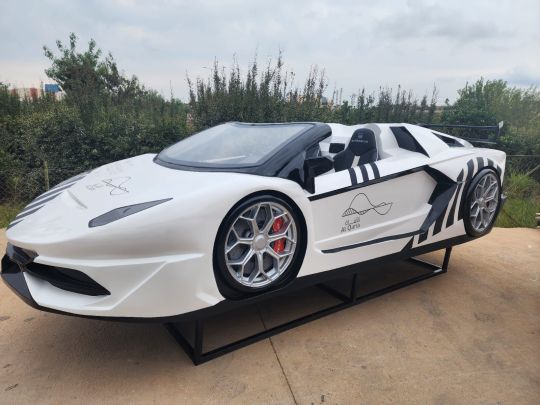
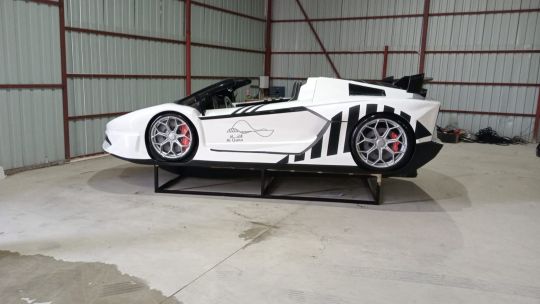
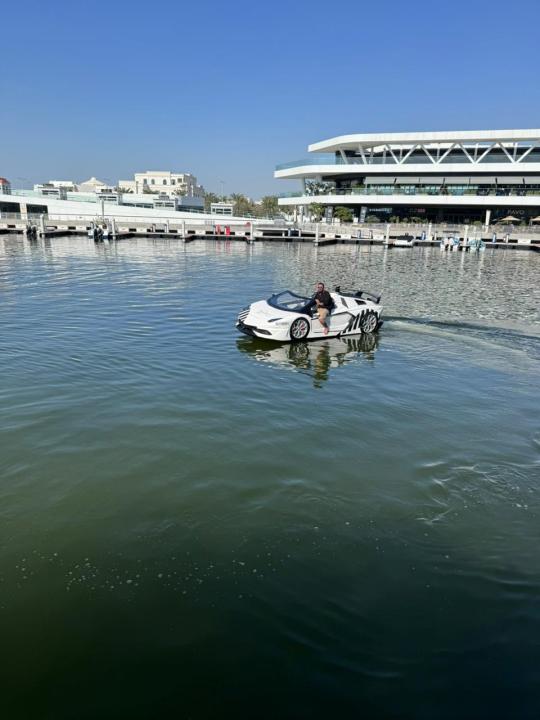
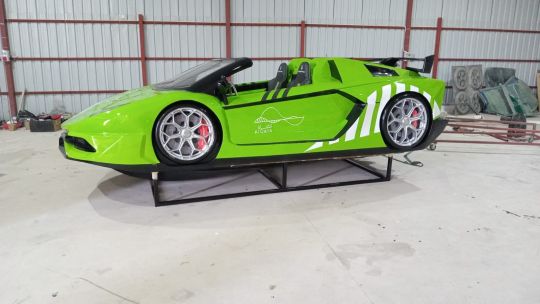
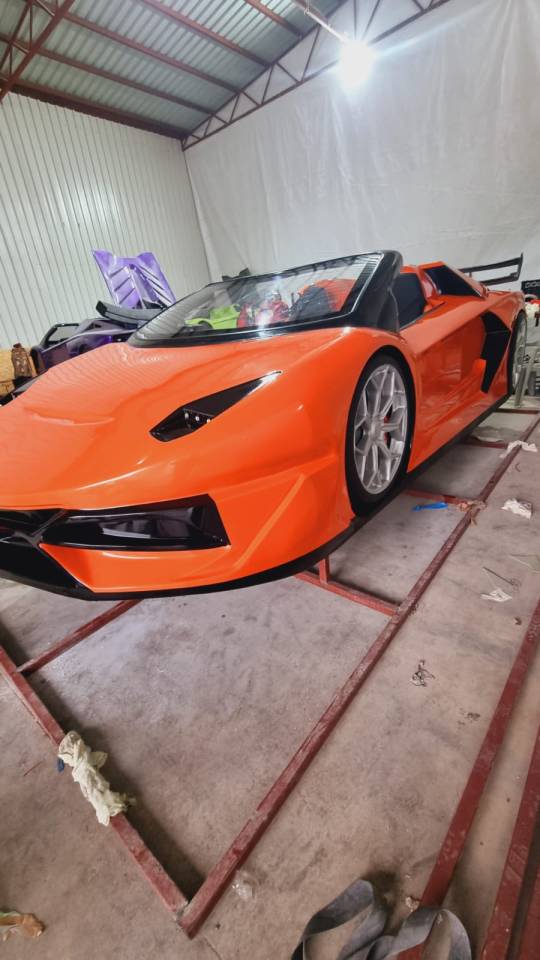
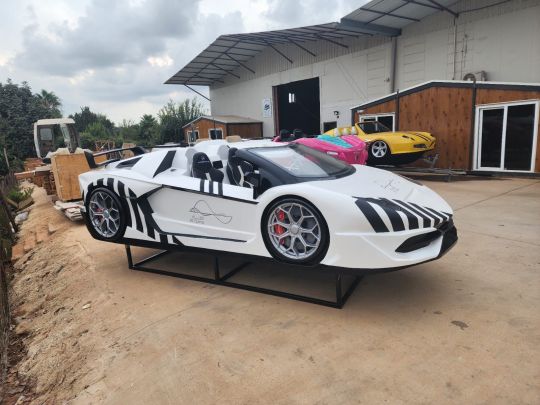
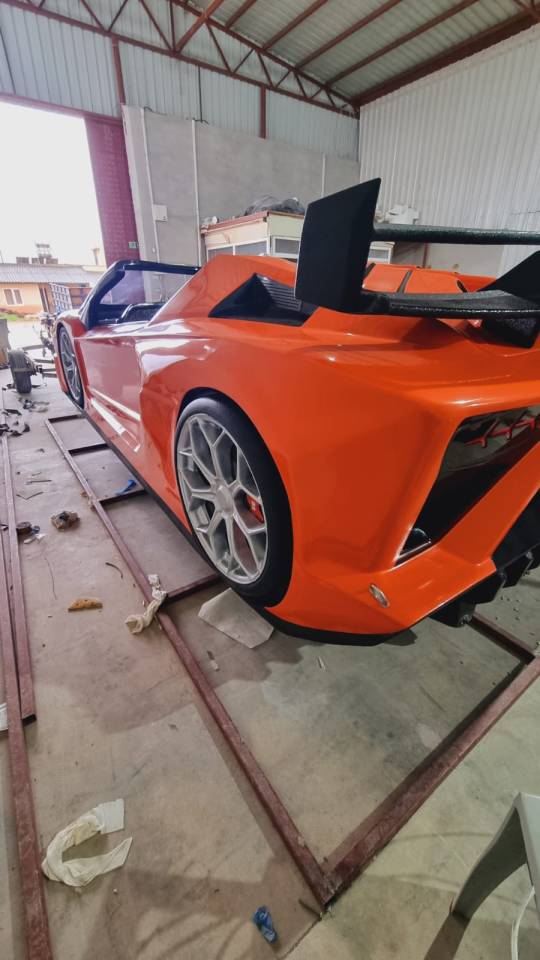
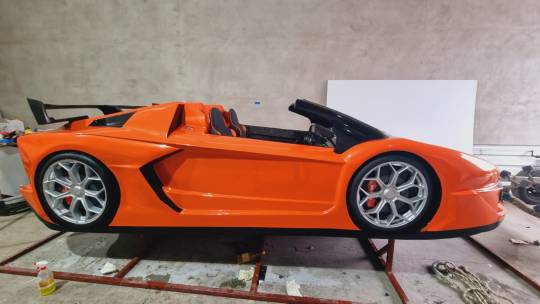
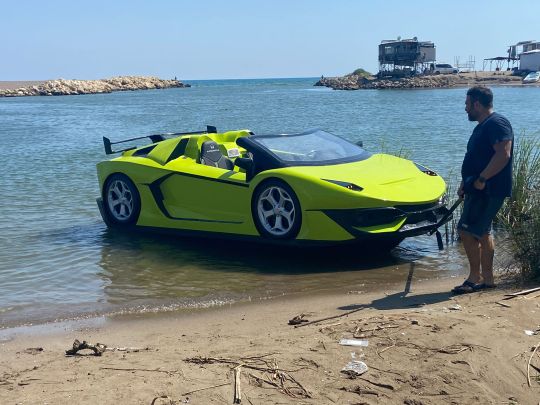
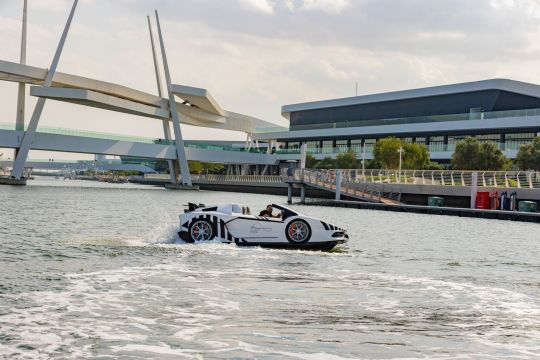
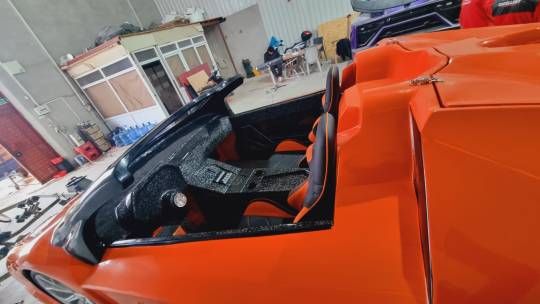
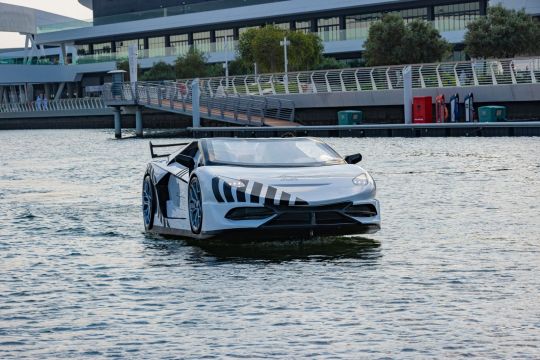
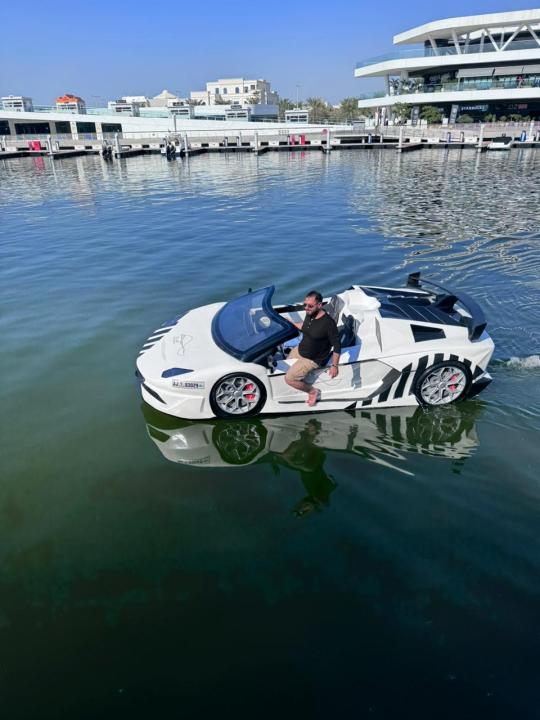
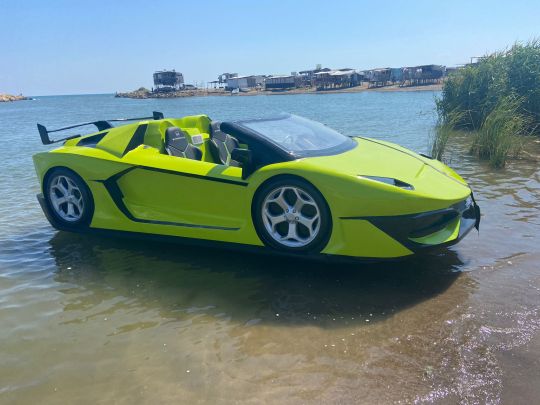
as Excellent Yachting Jetcar is to realize the goals we think about in the long term, to be able to implement what we want to do, these are to further develop the Jetcar Marine Vehicles that Excellent yachting produces, to design the best jetcar models so that our customers who buy jetcar water vehicles, that is, to have the best water experience, can produce and safely use the water.
The mission of Excellent Yachting Jetcar, a manufacturer of marine vehicles, includes the company’s goals, developing the marine vehicles it produces, designing jetcar models that will offer the best water experience to its customers and ensuring that these vehicles are used safely on the water. In addition, the mission of the Excellent Yachting Jetcar company also includes producing sustainable and environmentally friendly marine vehicles using innovative technologies and keeping customer satisfaction at the highest level. This mission, we know to focus on customer satisfaction for the continuity of the company’s leadership and reliability in the sector, and we continue our work without a moment’s break on product improvements, model design and production presentation in order to convince all excellent yachting company customers and our target audience, who may be our customers in the future, of product satisfaction. Dec.The issue of security is always the most important element for us.
The mission of the Excellent Yachting Jetcar company can be summarized as realizing its long-term goals, developing the Jetcar Marine Vehicles they produce, designing jetcar models that will offer the best water experience to its customers and ensuring their safe use on the water. While this mission focuses on improving the quality of the company’s products, it also aims to keep customer satisfaction and safety at the forefront.
#excellent jetcar#jetcar manufacturers#antalya jetcar prices#jetcar prices#turkey jetcar manufacturers#watercar turkey#turkey jetcar prices#watercar prices#watercar usa
0 notes
Text
tarmac sterndrive my beloved

this one's for you @calmingpi
100 notes
·
View notes
Text
Tips to help you load your boat on your trailer
If you are a man of the seas, you know how difficult it can be to manage your boat, especially the maintenance, the loading, and the unloading part. This article is aimed at helping you learn about a few tips that can make the process of loading your boat on your trailer a whole lot easier and safer. The aspect of safety is super important and hence, learning the right techniques and knowing the right approach is super important, especially if you have to load your boat and unload the same all by yourself.
One of the key tools or pieces of equipment that you need to have at all times is a self-loading boat rack. This is actually a fantastic piece of equipment that you must possess. It is an ideal tool that can help you load your boat with much ease and comfort. Also, you can easily find rooftop boat loaders for sale these days. Sales can help you get the product at a cheaper price provided you are looking at the right place.
When you are loading and unloading the boats just make sure that the prop is not hitting the bottom and for you to ensure the same it is important that you slightly trim your outboard motor or sterndrive if the ramp is shallow. Attempt to lower the ramp a little bit to give the boat room to float and center itself if it ends up a little off-center on the trailer.
0 notes
Text
0 notes
Text
Marine Propeller Market Size, Share, Emerging Demand and Key Driver Factors by 2032
The marine propeller market size stood at USD 3.48 billion in 2021. The market is anticipated to rise from USD 3.60 billion in 2022 to USD 5.68 billion by 2029 at 6.76% CAGR during the forecast period. Fortune Business Insights™ has delved into these insights in its latest research report titled, “Marine Propeller Market, 2022-2029.”
According to the analysis, technological advancements and the adoption of fixed propellers in marine propulsion systems will foster the product adoption. With the trend for real-time data tracking in the marine propulsion system, penetration of environment-friendly propulsion systems will bode well for the industry outlook. However, the Russia-Ukraine war could have a notable influence in the ensuing period.
Informational Source:
https://www.fortunebusinessinsights.com/marine-propeller-market-103074
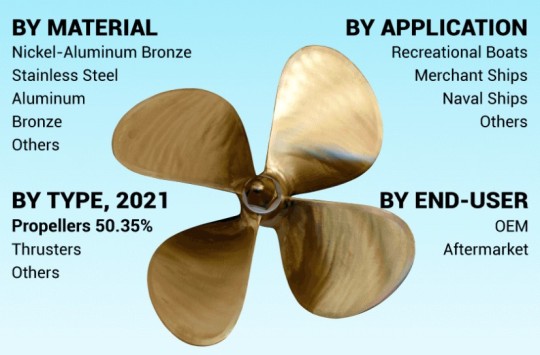
Major Players Profiled in the Report:
AB Volvo (Sweden)
Brunswick Corporation (U.S.)
Kongsberg Gruppen (Norway)
Mecklenburger Metallguss GmbH (Germany)
Bruntons Propellers Ltd. (U.K.)
Hyundai Heavy Industries Co., Ltd. (South Korea)
Kawasaki Heavy Industries, Ltd. (Japan)
MAN SE (Germany)
NAKASHIMA PROPELLER Co., Ltd. (Japan)
Rolls-Royce plc (U.K.)
SCHOTTEL Group (Germany)
Michigan Wheel Holdings LLC (U.S.)
Wärtsilä Corporation (Finland)
VEEM Propellers Ltd. (Australia)
Andritz AG (Austria)
Segments
In terms of type, the market is segmented into thrusters, propellers, and others.
Based on application, the market is segregated into naval ships, merchant ships, recreational boats, and others.
On the basis of number of blades, the market is fragmented into 5-blade, 4-blade, and 3-blade.
With respect to propulsion, the market includes sterndrive, inboard, outboard, and others.
With regards to material, the market is segmented into aluminum, stainless steel, nickel-aluminum bronze, bronze, and others.
In terms of end-user, the market is segregated into aftermarket and OEM.
On the geographical front, the market covers North America, Asia Pacific, Europe, and the Rest of the World.
Report Coverage
The report provides a holistic view of the market size, share, volume, and revenue. It has also delved into Porters’ Five Force analysis and SWOT analysis. The report has been prepared through qualitative and quantitative analysis to bolster the strategic approach. The primary interviews have been used to validate assumptions, findings, and the prevailing business scenarios. The report has also been prepared through secondary resources such as annual reports, press releases, white papers, and journals.
Drivers and Restraints
Rising Footfall of Seaborne Trade to Augment Industry Growth
Amidst the onslaught of the COVID-19 pandemic, a gradual rise in seaborne trade has spurred marine propeller market share. Industry players expect developing economies to play an invaluable role in fueling the demand for marine propeller systems. According to UNCTAD, developing countries’ share in maritime imports surged to 65% in 2019, while seaborne trade stood at 155 million tons. Moreover, UNCTAD’s Maritime Transport Report 2020 projected seaborne trade growth would expand by 4.8% in 2021. Notable investments in the naval sector across advanced and emerging economies will expedite the adoption of the equipment.
However, rigorous environmental regulations may challenge leading companies vying to expand their portfolios.
Regional Insights
Robust Demand for Frigates and Corvettes to Propel Asia Pacific Market Growth
Asia Pacific is likely to emerge as a happy hunting ground on the back of surging demand for frigates and corvettes. The strong demand is mainly attributed to boosting naval fleet operation and procurement initiatives. Upgrade of marine propeller design systems has become pronounced across South Korea, China, Japan, and India. The Asia Pacific market size was valued at USD 1.21 billion in 2021 and will grow owing to rising demand for advanced amenities.
The North America marine propeller market growth will witness an appreciable gain on the back of the thriving marine sector in the U.S. and Canada. Upgrade of dry cargos for real-time data exchange will propel regional growth. Prominently, strong demand for specialized vessels in maritime tourism will fuel the market growth.
Stakeholders expect Europe to provide lucrative growth opportunities on the back of the presence of leading companies across the U.K., France, Russia, and Germany. Moreover, bullish demand for cruise ships will bode well for the regional growth.
Competitive Landscape
Stakeholders Bolster Product Offerings to Tap Markets
Stakeholders are poised to infuse funds into product rollouts, technological advancements, and mergers & acquisitions. Well-established players and new players could invest in R&D activities to gain a competitive edge. Further, investments in geographical expansion could be pronounced over the next few years.
Key Industry Development
March 2020: SCHOTTEL awarded a contract to supply propulsion units for two double-ended Ro-Pax ferries by Ada Shipyard.
0 notes
Text
tarmac sterndrive
alright hit me with your most inside of inside jokes. A joke so inside that any outsider would need a six-month course just for the groundwork to begin to understand it.
I’ll start:
Small-hee.
2K notes
·
View notes
Text
Sterndrive vs Inboard vs Outboard: A Quick Comparison
FIY, there are 5 types of boat drives: Inboard, Outboard, Inboard/Outboard (Stern drive), V-drive, and Jet drive. Let’s take a deeper look at the differences between sterndrive vs inboard vs outboard.
Read more: https://www.ridetheducksofseattle.com/sterndrive-vs-inboard-vs-outboard/
0 notes